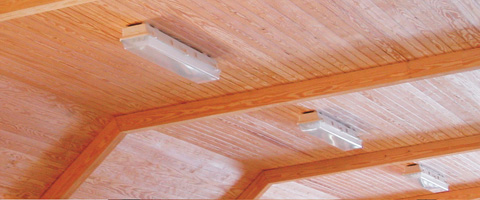|
Building Blocks of Horse Accident Prevention
Safety experts know that accident prevention relies on three key building blocks; maintaining an awareness of potential danger, controlling the physical environment, and practicing good personal or work habits.
Article by Karen Elizabeth Baril
My father was one of the most practical and logical men I’ve ever known. In his heyday he loved to engage in philosophical discussions. Sometimes these discussions got pretty lively and his particular favorite was on the nature of accidents. He didn't believe
there was such a thing as a true accident. In fact, he argued that most of what we call accidents are events that could have been
prevented. You know, when it comes to horses, that's not such a bad philosophy to live by.
Safety experts know that accident prevention relies on three key building blocks; maintaining an awareness of potential danger,
controlling the physical environment, and practicing good personal or work habits. Let's take a look at what that means to you as a horse owner.
Awareness:
• Learn to see the world through your horse's eyes. The horse is a prey animal. That means he has an innate need to know who you
are, where you are, and what you're going to do at all times. Your horse has 60 million years of evolution behind him---that makes
him keenly aware of everything going on around him. A simple example would be picking your horse's hoof. Instead of going directly
at it, run your hand down his shoulder first and then ask for his hoof, politely.
• Your horse has near 360° vision so that he can see predators sneaking up on him. If you're behind a horse and he perceives you as a predator, he might kick out at you.
• Horses spook. Their flight instinct is finely tuned. That's not something we can always control, but we can be sure we're in a safe
spot if he should spook. When leading your horse always stand near his shoulder and maintain an awareness of his expression.
• Don't expect other horses to behave as calmly as yours. In boarding situations, in lesson barns, or wherever you're likely to
encounter other horses never assume they'll behave as yours might. And remember that even your normally calm horse might be less comfortable in unfamiliar surroundings.
Control the physical environment:
• De-clutter your barn aisles. Wheelbarrows, muck buckets, rakes, brooms, saddles, all need to find their home after every use. So
many accidents can be avoided simply by committing to better housekeeping!
• Stall doors should be shut at all times whether or not the stall is occupied. Be sure to buy quality stall components. We've seen
some nasty accidents on stalls that were not finished properly---they look pretty, but when it comes to stalls the old adage,
handsome is as handsome does rings true. We use a heavy duty 14-gauge steel for our stall bodies and a 16-gauge for all grille work.
Our surface prep is unmatched in the industry. Metal is sand-blasted to remove impurities, inspected, and then sanded by hand to
ensure a smooth finish. There are absolutely no sharp edges to snag a delicate muzzle! We use a hot-dipped galvanized metal with a
thick coating of zinc for superior rust protection and we boast one of the longest and most thorough curing process in the industry.
 |
• Lighting is often neglected when it comes to barns, but poor lighting can lead to accidents. We should all be aware that the use of
non-agricultural lighting in barns brings a risk of fire. Use only UL approved fixtures that reproduce daylight quality light, cool burning
bulbs, gasketed fixtures that are made to withstand power surges, and, of course---enclosed to seal out moisture and bugs.
Practice good habits:
• Invest in and wear Personal Protective Equipment or PPEs like helmets, safety vests, proper shoes, and safety stirrups.
• Always leave an escape route for both horse and human. For example, when handling your horse in tandem with another
professional---your veterinarian or farrier---stand on the same side of the horse as your veterinarian. Your horse would rather not run you down and chances are he won't if he doesn't feel trapped.
• Communicate with innocent bystanders. Never assume others know how to behave around horses, especially children.
|